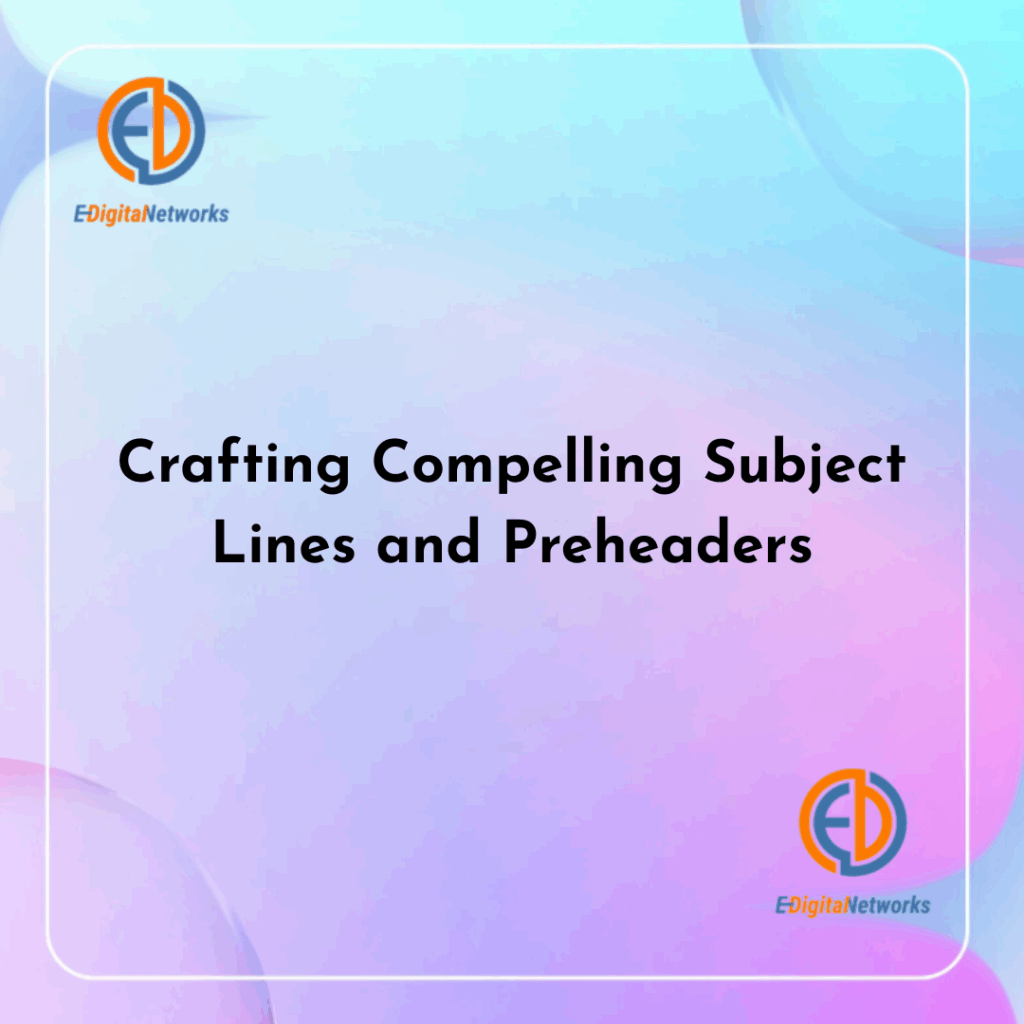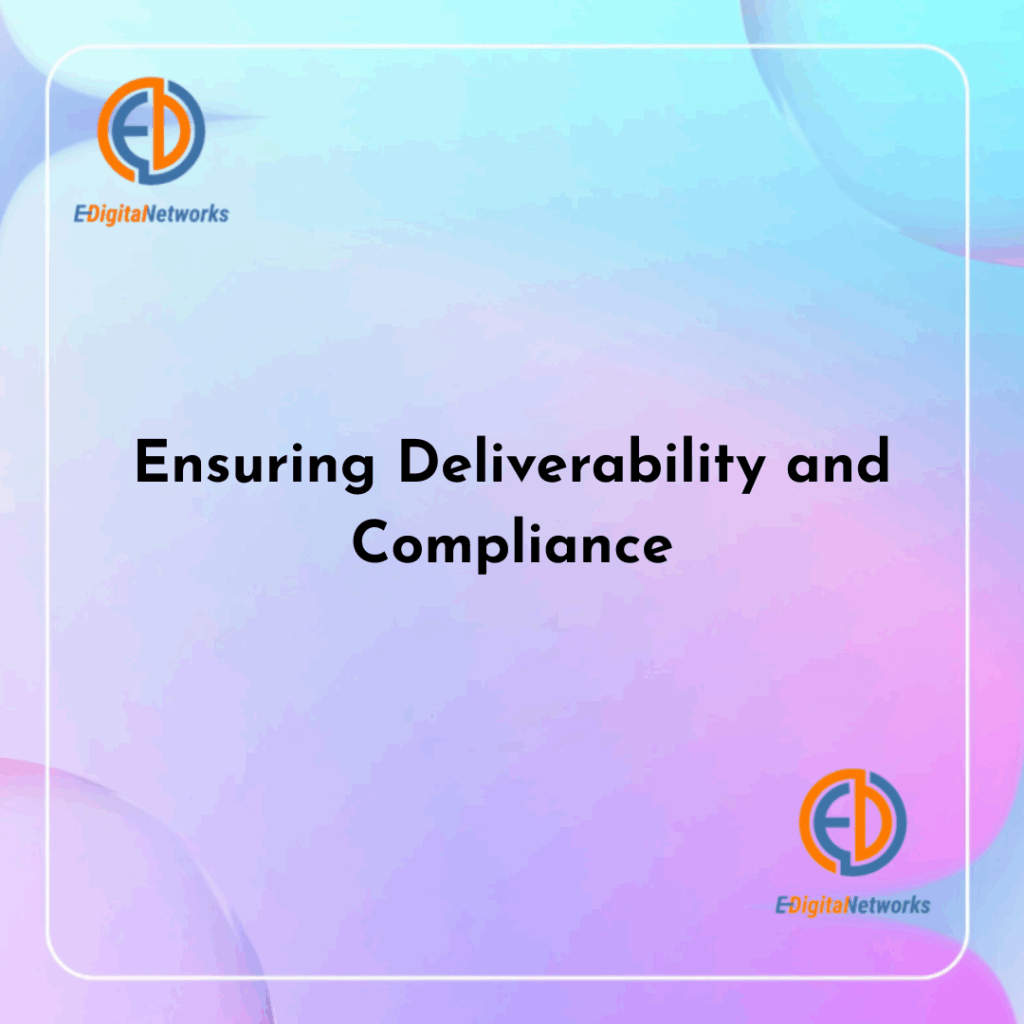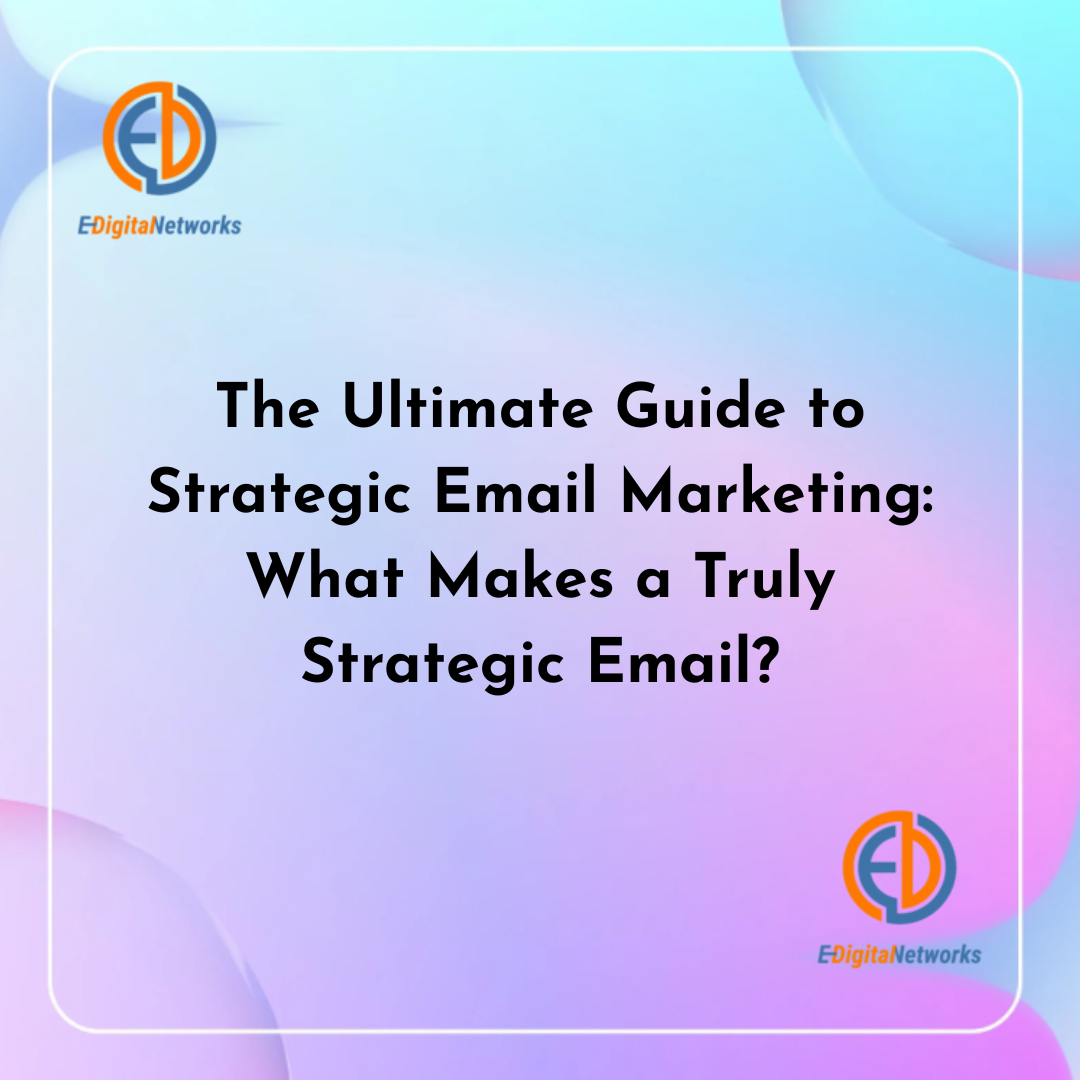Sending promotional messages alone is no longer sufficient to grab subscribers’ attention or motivate significant action in the congested world of digital communication. A lot of companies question themselves, What is a strategic email in email marketing? and are unaware of how much preparation, study, and execution are needed. A strategic email is carefully matched with long-term connections, client habits, and broader corporate goals, unlike generic newsletters or one-time blasts. To provide value for both the sender and the recipient, it blends accurate segmentation, engaging content, ideal timing, and quantifiable results.
Gaining a thorough grasp of your audience, including their preferences, past purchases, and interaction trends, is essential to creating a really strategic strategy. Whether through timely reminders, instructional insights, or tailored product suggestions, it necessitates a dedication to producing material that has a profound impact. A strategic framework also guarantees that every campaign has a specific goal, such as cultivating leads, increasing conversions, or cultivating loyalty.
This manual explores the essential elements that turn routine sends into effective, purpose-driven messages. We’ll go over 10 crucial aspects of creating and executing emails that promote long-term growth and client satisfaction, from idea definition to the use of sophisticated automation and analytics. You will have a thorough plan for improving your email efforts by the conclusion of this journey, guaranteeing that each message you send is not only read but also inspires action, builds your brand, and keeps your audience excitedly awaiting the next one.
Defining a Strategic Email
A strategic email is a focused communication intended to accomplish particular goals within the larger marketing ecosystem; it is much more than just a promotional tool. It starts with specific objectives, such as improving average order value, re-engaging inactive subscribers, onboarding new clients, or generating leads. Every component, from the call to action to the subject line, is in accordance with these goals, guaranteeing consistency and purpose. Importantly, smart emails make recipients feel recognized and appreciated by using data and insights to customize communications. Strategic delivers target material to specific or specialized requirements rather than delivering the same information to the whole database, increasing engagement and return on investment.
Importance of Audience Segmentation and Personalization
The foundation of strategic email marketing is segmentation. You may provide communications that genuinely resonate by segmenting your audience according to demographics, historical habits, purchase history, or engagement levels. Because they cater to the individual interests and problems of each receiver, personalized emails have much higher open and click-through rates. Segmenting your customer base based on previous purchases, for example, enables you to suggest related goods, while behavioral triggers, like abandoned carts, guarantee timely reminders. Predictive analytics is even used in advanced techniques to foresee wants and provide customized offers before clients even realize they want them. Meaningful relationships and trust are fostered by this degree of customisation.

Crafting Compelling Subject Lines and Preheaders
In the event that subscribers do not open the email, even the most carefully thought-out email campaign fails. As gatekeepers, subject lines and preheaders affect inbox visibility and interaction. Concise, benefit-driven subject lines that pique interest or convey urgency are used in strategic emails. Preheaders support the headline by reiterating the value proposition and offering further background. Finding the best combinations that appeal to various segments is aided by testing variants using A/B trials. Relevance can also be raised by adding customization, such as the recipient’s name or region. By carefully crafting these components, you may increase open rates and make your emails stand out in packed inboxes.
Timing and Frequency Optimization
Sending time and frequency have a big impact on deliverability and engagement. Infrequent communication runs the danger of reducing brand memory, while bombarding subscribers with emails every day might cause tiredness and unsubscribes. Data-driven insights are used in strategic email marketing to identify the optimal times and days for every audience demographic. B2B receivers, for instance, could interact more during work hours on weekdays, whereas B2C audiences might read messages on the weekends or at night. Sending schedules can be automated with the use of tools that examine historical engagement trends. Furthermore, strategic cadence balances visibility and subscriber satisfaction by adjusting for marketing goals, such as lighter email schedules and more frequent touchpoints during product launches.
Creating Value-Driven, Relevant Content
Whether it’s through informative updates, exclusive offers, or instructional material, strategic emails clearly provide value. They present your brand as a useful resource rather than a sales pitch, gradually establishing credibility. For instance, a merchant may provide carefully chosen style advice for members of a loyalty program, while a software supplier might publish case studies or best-practice recommendations in a series aimed at new users. Relevance is ensured by the content’s alignment with your marketing goals and the recipient’s lifecycle stage. Multimedia, such as pictures, movies, or interactive components, can improve the experience even more, but only if it improves load times and message clarity.
Integrating Emails into the Customer Journey
Effective email marketing leads consumers from awareness to advocacy by blending in smoothly with the larger customer experience. New subscribers are introduced to your brand’s values, story, and main products through the welcome series. Milestone emails commemorate anniversaries or loyalty accomplishments, while onboarding procedures offer recommendations to optimize product usage. Post-purchase processes collect feedback and foster repeat business. Automated triggers guarantee prompt, contextually appropriate messages at every level. Visually illustrating these paths makes interconnections and touchpoints clear, enabling ongoing improvement. In the end, strategic email plays a crucial role in creating a seamless, multichannel experience.
Leveraging Automation and Behavioral Triggers
Strategic planning becomes a scalable implementation through automation. You can make sure that emails are sent out at the exact moment when subscribers are most responsive by configuring rule-based triggers, such as website visits, downloads, or transactional events. Drip campaigns progressively lead prospects to a conversion by delivering a series of communications over the course of days or weeks. Conditional routes, where subscriber activities determine the following content, are made possible by advanced platforms. Without manual intervention, this dynamic method maintains timely and relevant messaging. As a result, strategic email marketing uses automation to sustain customized touches at scale, allowing teams to concentrate on strategic and creative enhancements.
Measuring Performance with Key Metrics
Making decisions based on data is essential to improving a plan. Campaign efficacy may be determined by tracking important indicators, including open rates, click-throughs, conversion rates, and unsubscribe rates. Monitoring ROI and revenue per email provides an additional level of assessment for communications that are revenue-focused. Heatmap analysis helps with layout and content changes by exposing engagement patterns in messages. Frequent reporting reveals patterns over time, emphasizing both successes and opportunities for development. Strategic email practitioners consistently improve every element of their campaigns by setting benchmarks and doing iterative A/B testing, guaranteeing a steady performance increase.

Ensuring Deliverability and Compliance
The foundation of strategic success is high deliverability. Keeping a clean list, which eliminates invalid or disengaged subscribers, lowers bounce rates and safeguards the reputation of the sender. By putting authentication mechanisms like SPF, DKIM, and DMARC into practice, emails are guaranteed to get past spam filters and into inboxes. Adherence to privacy laws (such as the GDPR and CAN-SPAM) through unambiguous permission procedures and simple unsubscribe choices is equally crucial. Quick resolution of any problems is made possible by routinely reviewing procedures and keeping an eye on deliverability dashboards. Strong deliverability and compliance procedures are the foundation of trust and dependability, which are essential for strategic emails.
Choosing the Right Tools and Platforms
Platforms that provide sophisticated segmentation, automation, and analytics are essential for carrying out strategic email marketing. Assess suppliers according to their feature set, usability, and capacity to integrate with your content management, e-commerce, or CRM systems. Seek out dashboards for real-time reporting, dynamic content support, and drag-and-drop journey builders. Infrastructure scalability and deliverability are critical for expanding subscriber bases. To guarantee a seamless adoption, take into account community forums, training materials, and vendor assistance as well. With the correct combination of tools, teams can successfully execute strategic frameworks, resulting in constant engagement and quantifiable business outcomes.
Conclusion
Routine emails become meaningful, high-impact communications when a strategic email marketing strategy is used. Businesses may foster stronger subscriber connections and promote sustainable development by establishing clear goals, utilizing segmentation and customization, timing optimization, and automation. The strategy toolset is completed by the appropriate technological platform, deliverability best practices, and continuous measurement. By following these guidelines, you can turn your email campaign into a potent tool for increasing engagement, conversion, and fostering enduring client loyalty.

